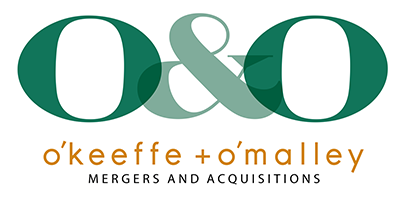Working Capital – No Surprises
Apr 08, 2020
Negotiating working capital when selling a business can be one of the most contentious issues of the entire process, often because the seller does not expect it to be included in the purchase price. But as a seller, you want to make sure the buyer can successfully operate the business the day after closing, and that requires sufficient capital to keep the business going.
Working capital is defined as the net of current assets less current liabilities, or the money available to fund the day-to-day operations of the business. Current assets usually include cash, accounts receivable, inventory and pre-paid expenses. Current liabilities usually include accounts payable, accrued expenses, sales tax payable, lines of credit and the current portion of long-term debt.
The buyer and seller need to agree at the letter of intent (LOI) stage to the components included in working capital and exactly what the buyer is purchasing. A successful sale occurs when both the buyer and seller agree that the working capital calculation is fair to both sides.
That said, there are things a seller can do to lower working capital prior to a sale. For example, if normal working capital is $500,000, but the business only needs $400,000 to sustain, that’s $100,000 the seller can take out of the business prior to a sale without affecting the value of the business.
The amount of working capital left in the business for the buyer is negotiable, and sometimes all cash is excluded. Other times, a portion of the cash is left in the working capital calculation in order for the new owner to continue to run the business. Although the current portion of long-term debt is considered a current asset, it is usually excluded from the purchased working capital. Lines of credit may be included if they are used to fund the fluctuations of accounts receivable and inventory.
In general, the calculation usually focuses on one of several month-end balance sheet dates. We believe the fairest method is to use the average working capital of the trailing 12 months. Between the time the LOI is signed and closing, actual working capital will fluctuate, and adjustments will be made accordingly. Using the trailing 12-month average takes into consideration seasonality and usually minimizes the adjustments that will be made at closing.
Another important component of the working capital is inventory, which also has closing implications since it’s a moving target. In most cases, the buyer and seller agree on an average inventory figure and that is documented in the purchase agreement. The difference between this figure and the actual inventory at closing will raise or lower the purchase price, so it’s best for sellers to manage inventory as closely as possible to the agreed-upon figure so neither party has an unpleasant surprise on closing day.
Because there are so many moving pieces to the working capital component, its best to seek advice from an experienced M&A advisor. Your M&A partner will make sure that the terms are clearly defined, that they are fair to all parties, and that you as the seller maximize your proceeds and leave nothing on the table.
For advice on any aspect of structuring a deal, contact O’Keeffe & O’Malley at 913.648.0185.
